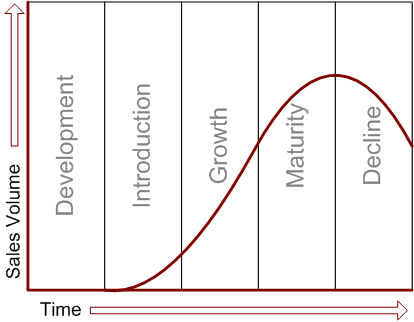The product life cycle means every product has a capability such that it can be used for a certain period of time. It passes through the different stages of life as a man moves from childhood to maturity and old age. Similarly products have life cycles by which they are monitored and evaluated. The first stage in the product life cycle is product making or development. The product is in development when the companies are making specific products which they invest their money in and get nothing from these products at this stage.
Secondly the product is introduced in the market. This is second stage. At this the stage the advertising campaign is run on television to tell people about this product. The product suffers with the competition in the market. In this stage the price is low because the product is in the launching stage. Heavy expenditure is being put on the promotions to boost sales. The next stage is the growth stage. In this stage the sales of the product are on a peak and the product has captured a large geographical area. The product has deeply penetrated into the market at this stage. The product has great distribution in the market and is available in every shop of the market.
Secondly the product is introduced in the market. This is second stage. At this the stage the advertising campaign is run on television to tell people about this product. The product suffers with the competition in the market. In this stage the price is low because the product is in the launching stage. Heavy expenditure is being put on the promotions to boost sales. The next stage is the growth stage. In this stage the sales of the product are on a peak and the product has captured a large geographical area. The product has deeply penetrated into the market at this stage. The product has great distribution in the market and is available in every shop of the market.
